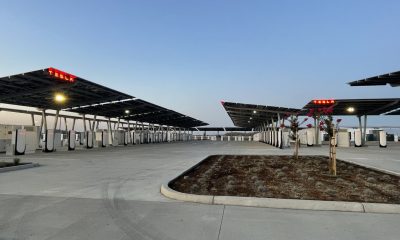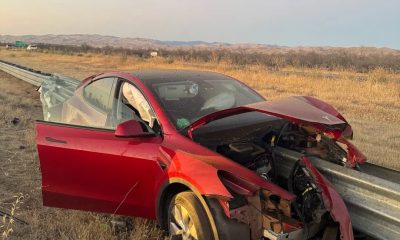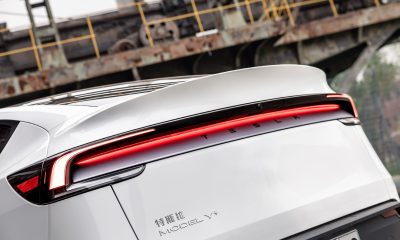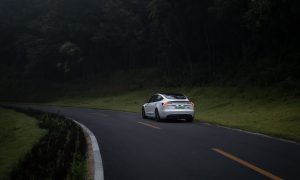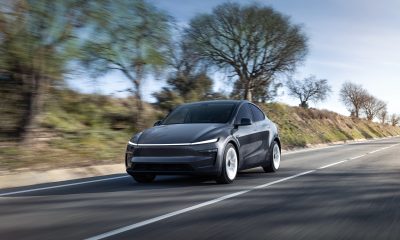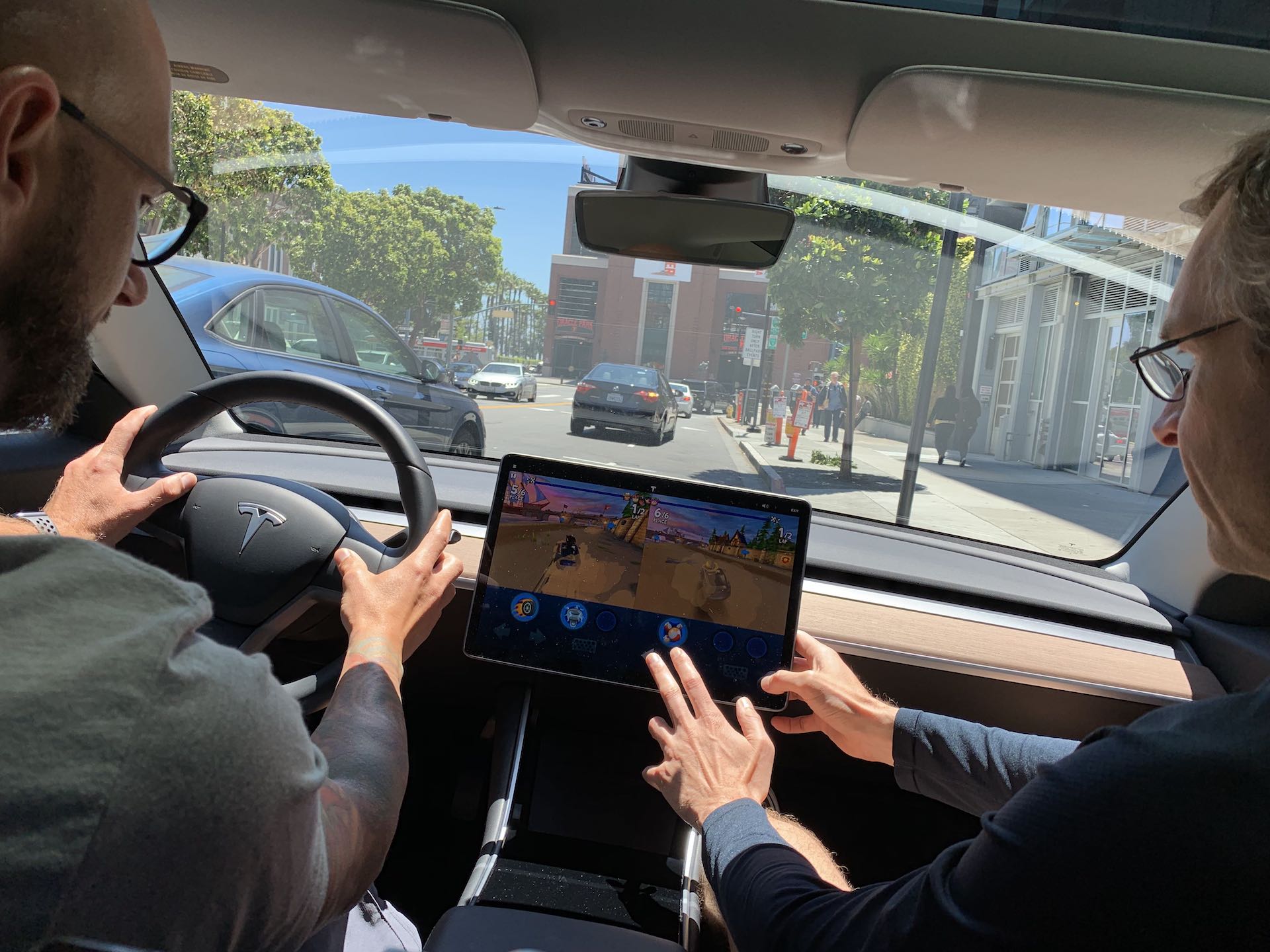

Lifestyle
Tesla Arcade is priming us for the self-driving future, we just don’t know it yet
This is a free excerpt of our weekly members-only newsletter. Each week, we give you our take on the biggest stories of the week, behind-the-scenes coverage, our favorite photos & videos, and much more. Join the family and become a member today!
A stone’s throw away from Giants stadium in downtown San Francisco parked an unassuming Midnight Silver Metallic Tesla Model 3, only this one was loaded with a real game-changer. Literally.
“Thanks for coming out to check out the latest Beach Buggy Racing 2,” said game developer and co-founder of Vector Unit, Ralf Knoesel, to Tom Cross and I who had just arrived to witness Tesla’s first foray into the billion-dollar global gaming industry.
“We’re really excited to show you guys what we’ve been working on,” a Tesla representative tells us, further explaining that the electric carmaker had been working with game studios like Vector Unit on developing fun and unique experiences for Tesla drivers and passengers alike. Experiences that would keep them entertained while they’re Supercharging or waiting in a car.
Sure, one can argue that there’s no replacement for the entertainment value that comes by way of Tesla’s in-car fart-on-demand app and its Classic Atari games, but they would be sorely mistaken.
Tesla Arcade has taken the richness and interactive gameplay of traditional mobile apps and gaming consoles and made them available directly inside the vehicle.
Lightning bolt powerups? Check. Ability to unlock secret boss levels? Absolutely. And do this while challenging a passenger (or perhaps, one day, other outside players) in multi-player mode? F-yeah! It’s all there. And this can all be experienced in full surround sound with active feedback from the vehicle’s steering wheel which doubles as a gaming controller. Playing Tesla Arcade is akin to gaming in the world’s most realistic simulator. Well. Because it is.
This is going to be a game-changer. We went up against @vectorunit in a multi-player bout of Beach Buggy Racing 2 and got schooled – @_TomCross_ pic.twitter.com/6Qgt7QLkNi
— TESLARATI (@Teslarati) June 18, 2019
40 minutes of gameplay whizzed by before we knew it. And that, my friend, is precisely what Tesla wants. You see, by zapping away time, the feeling of having to wait while charging your car becomes non-existent. More importantly, by creating an SDK that allows app developers to interface with the vehicle’s hardware, Tesla is planting the first seeds that will sprout an iTunes-like ecosystem to support our autonomous future. We just don’t know it yet.
Entertain Me
If you think about it, it makes complete sense to have a rich library of apps and games inside a vehicle. This will especially be the case when self-driving cars become prevalent.
In a culture where human-to-human connections have given way to our digital overlords, having an extension of your life that includes your favorite video streaming platforms; your favorite business apps; and all of your favorite on-demand services (hi DoorDash, I’m looking at you) with you, while passing time during a commute inside a Tesla, feels like a no-brainer.
By the end of 2020, Elon Musk says Tesla owners will be able to add their vehicles to the company’s self-driving, ride-hailing “Robotaxi” network, which will enable Tesla and its vehicle owners to run a similar business model to Uber or Airbnb. Having entertainment will be paramount, filling the void of awkward conversations with strangers and enhancing the overall ride-sharing experience.
We’re at the cusp of a massive behavioral shift toward enhanced in-car lifestyles. Tesla’s opening of a gaming SDK that allows 3rd party developers to interface with the vehicle’s hardware is a pioneering moment for an entirely new industry that is about to awaken.
“Tesla, order a deep dish pizza from Zachary’s for home delivery at 7 pm.”
What do you think? Let’s chat in the comments below.
Elon Musk
X account with 184 followers inadvertently saves US space program amid Musk-Trump row
Needless to say, the X user has far more than 184 followers today after his level-headed feat.
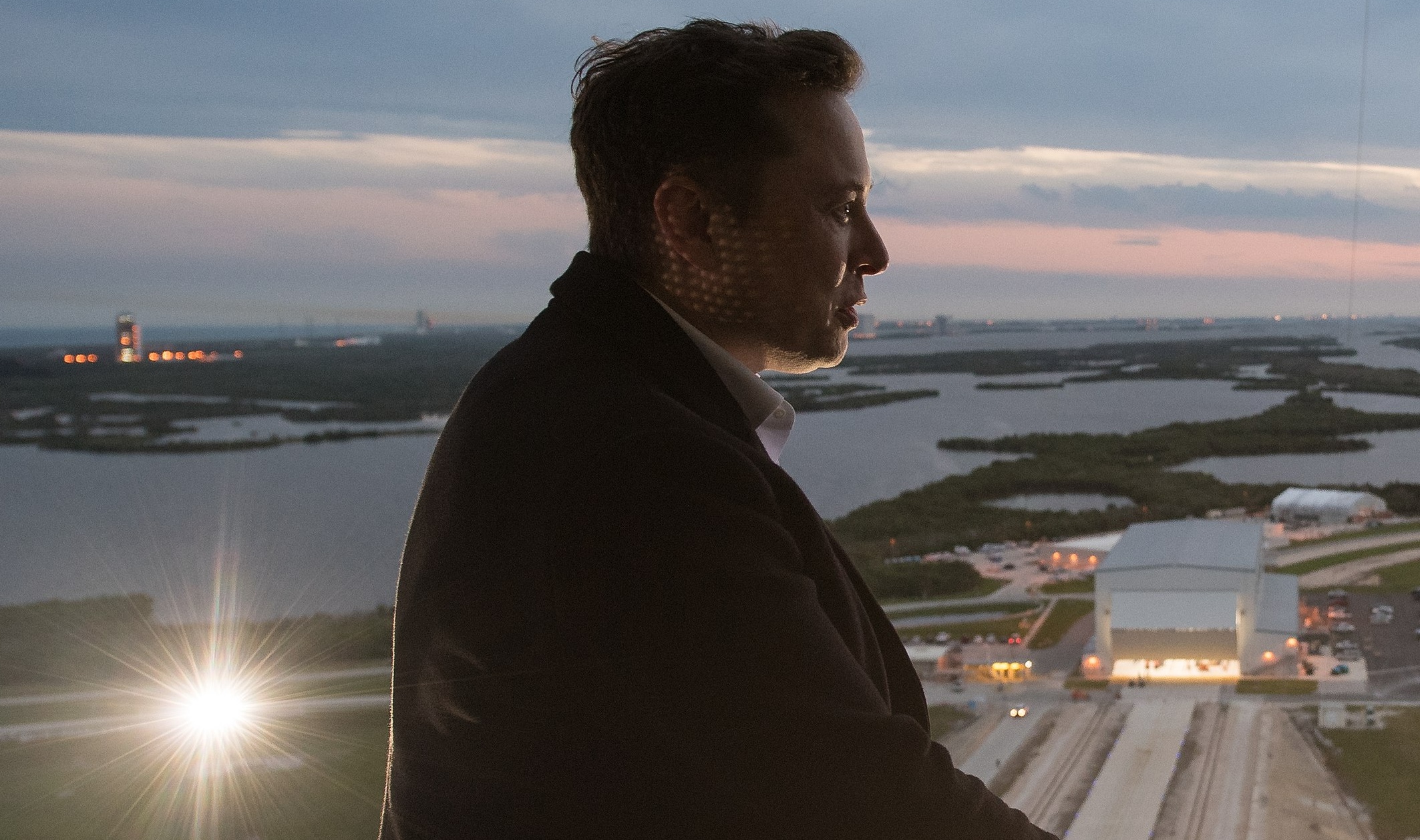
An X user with 184 followers has become the unlikely hero of the United States’ space program by effectively de-escalating a row between SpaceX CEO Elon Musk and President Donald Trump on social media.
Needless to say, the X user has far more than 184 followers today after his level-headed feat.
A Near Fall
During Elon Musk and Donald Trump’s fallout last week, the U.S. President stated in a post on Truth Social that a good way for the United States government to save money would be to terminate subsidies and contracts from the CEO’s companies. Musk responded to Trump’s post by stating that SpaceX will start decommissioning its Dragon spacecraft immediately.
Musk’s comment was received with shock among the space community, partly because the U.S. space program is currently reliant on SpaceX to send supplies and astronauts to the International Space Station (ISS). Without Dragon, the United States will likely have to utilize Russia’s Soyuz for the same services—at a significantly higher price.
X User to the Rescue
It was evident among X users that Musk’s comments about Dragon being decommissioned were posted while emotions were high. It was then no surprise that an X account with 184 followers, @Fab25june, commented on Musk’s post, urging the CEO to rethink his decision. “This is a shame this back and forth. You are both better than this. Cool off and take a step back for a couple days,” the X user wrote in a reply.
Much to the social media platform’s surprise, Musk responded to the user. Even more surprising, the CEO stated that SpaceX would not be decommissioning Dragon after all. “Good advice. Ok, we won’t decommission Dragon,” Musk wrote in a post on X.
Not Planned, But Welcomed
The X user’s comment and Musk’s response were received extremely well by social media users, many of whom noted that @Fab25june’s X comment effectively saved the U.S. space program. In a follow-up comment, the X user, who has over 9,100 followers as of writing, stated that he did not really plan on being a mediator between Musk and Trump.
“Elon Musk replied to me. Somehow, I became the accidental peace broker between two billionaires. I didn’t plan this. I was just being me. Two great minds can do wonders. Sometimes, all it takes is a breather. Grateful for every like, DM, and new follow. Life’s weird. The internet’s weirder. Let’s ride. (Manifesting peace… and maybe a Model Y.)” the X user wrote.
Lifestyle
Tesla Cybertruck takes a bump from epic failing Dodge Charger
The Cybertruck seemed unharmed by the charging Charger.
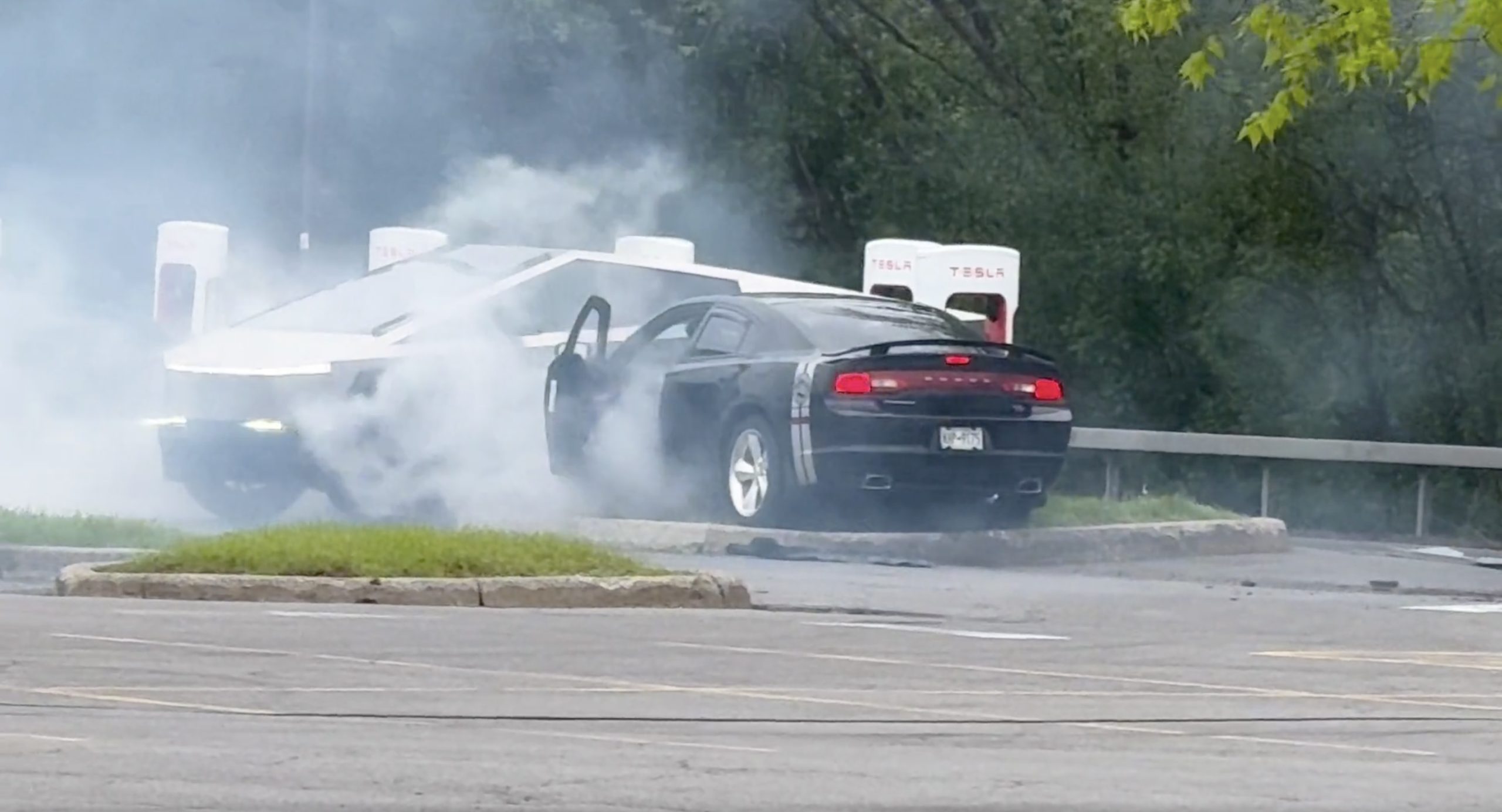
There comes a time in a driver’s life when one is faced with one’s limitations. For the driver of a Dodge Charger, this time came when he lost control and crashed into a Tesla Cybertruck–an absolute epic fail.
A video of the rather unfortunate incident was shared on the r/TeslaLounge subreddit.
Charging Charger Fails
As could be seen in the video, which was posted on the subreddit by Model Y owner u/Hammer_of_something, a group of teens in a Dodge Charger decided to do some burnouts at a Tesla Supercharger. Unfortunately, the driver of the Charger failed in his burnout or donut attempt, resulting in the mopar sedan going over a curb and bumping a charging Cybertruck.
Ironically, the Dodge Charger seemed to have been parked at a Supercharger stall before its driver decided to perform the failed stunt. This suggests that the vehicle was likely ICE-ing a charging stall before it had its epic fail moment. Amusingly enough, the subreddit member noted that the Cybertruck did not seem like it took any damage at all despite its bump. The Charger, however, seemed like it ran into some trouble after crashing into the truck.
Alleged Aftermath
As per the the r/TeslaLounge subreddit member, the Cybertruck owner came rushing out to his vehicle after the Dodge Charger crashed into it. The Model Y owner then sent over the full video of the incident, which clearly showed the Charger attempting a burnout, failing, and bumping into the Cybertruck. The Cybertruck owner likely appreciated the video, in part because it showed the driver of the Dodge Charger absolutely freaking out after the incident.
The Cybertruck is not an impregnable vehicle, but it can take bumps pretty well thanks to its thick stainless steel body. Based on this video, it appears that the Cybertruck can even take bumps from a charging Charger, all while chilling and charging at a Supercharger. As for the teens in the Dodge, they likely had to provide a long explanation to authorities after the incident, since the cops were called to the location.
Lifestyle
Anti-Elon Musk group crushes Tesla Model 3 with Sherman tank–with unexpected results
Ironically enough, the group’s video ended up highlighting something very positive for Tesla.
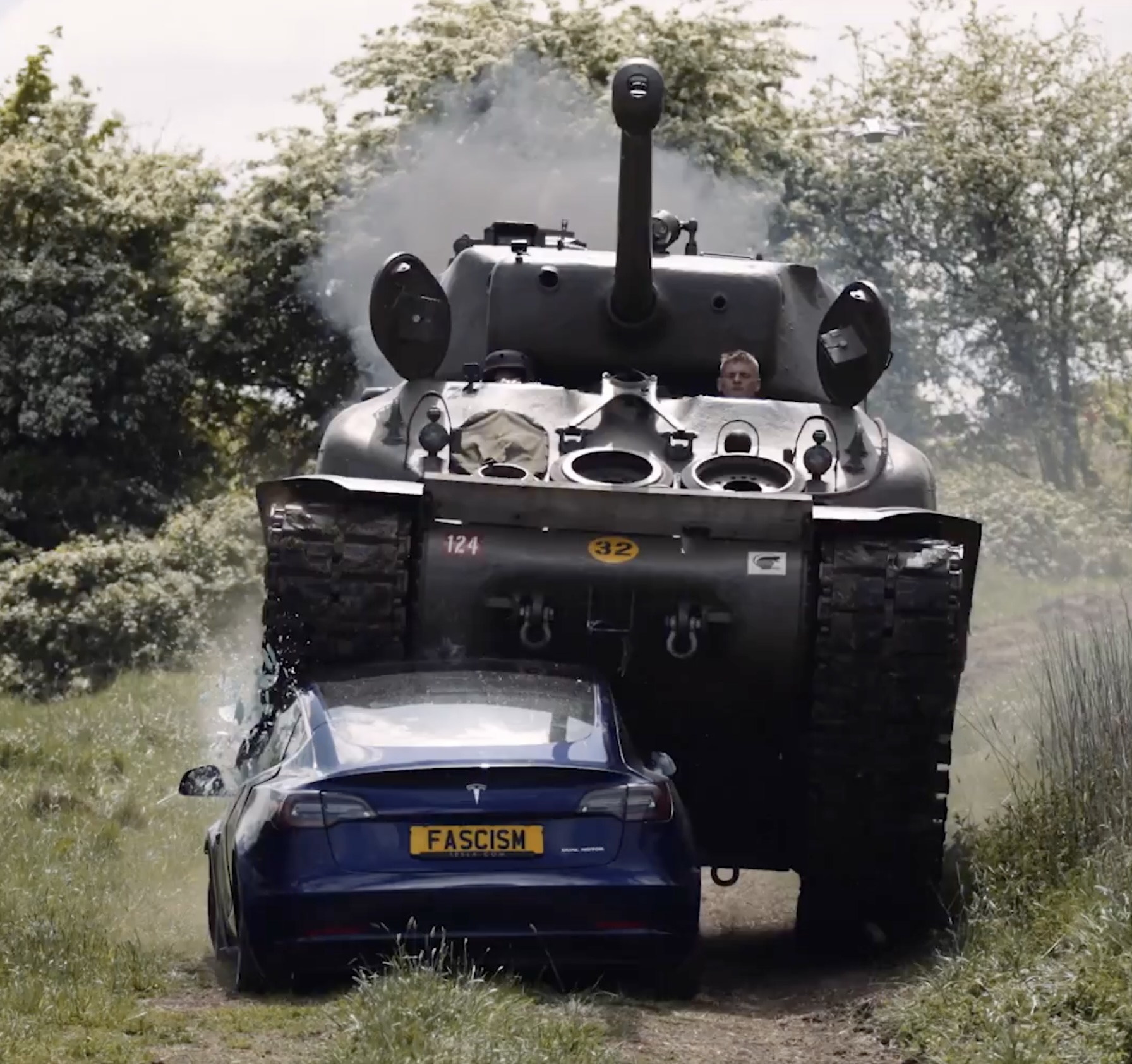
Anti-Elon Musk protesters and critics tend to show their disdain for the CEO in various ways, but a recent video from political action group Led By Donkeys definitely takes the cake when it comes to creativity.
Ironially enough, the group’s video also ended up highlighting something very positive for Tesla.
Tank vs. Tesla
In its video, Led By Donkeys featured Ken Turner, a 98-year-old veteran who served in the British army during World War II. The veteran stated that Elon Musk, the richest man in the world, is “using his immense power to support the far-right in Europe, and his money comes from Tesla cars.”
He also noted that he had a message for the Tesla CEO: “We’ve crushed fascism before and we’ll crush it again.” To emphasize his point, the veteran proceeded to drive a Sherman tank over a blue Tesla Model 3 sedan, which, of course, had a plate that read “Fascism.”
The heavy tank crushed the Model 3’s glass roof and windows, much to the delight of Led By Donkeys’ commenters on its official YouTube channel. But at the end of it all, the aftermath of the anti-Elon Musk demonstration ended up showcasing something positive for the electric vehicle maker.
Tesla Model 3 Tanks the Tank?
As could be seen from the wreckage of the Tesla Model 3 after its Sherman encounter, only the glass roof and windows of the all-electric sedan were crushed. Looking at the wreckage of the Model 3, it seemed like its doors could still be opened, and everything on its lower section looked intact.
Considering that a standard M4 Sherman weighs about 66,800 to 84,000 pounds, the Model 3 actually weathered the tank’s assault really well. Granted, the vehicle’s suspension height before the political action group’s demonstration suggests that the Model 3’s high voltage battery had been removed beforehand. But even if it hadn’t been taken off, it seemed like the vehicle’s battery would have survived the heavy ordeal without much incident.
This was highlighted in comments from users on social media platform X, many of whom noted that a person in the Model 3 could very well have survived the ordeal with the Sherman. And that, ultimately, just speaks to the safety of Tesla’s vehicles. There is a reason why Teslas consistently rank among the safest cars on the road, after all.
-

 Elon Musk1 week ago
Elon Musk1 week agoTesla investors will be shocked by Jim Cramer’s latest assessment
-

 News2 weeks ago
News2 weeks agoTesla Robotaxi’s biggest challenge seems to be this one thing
-

 News2 weeks ago
News2 weeks agoWatch the first true Tesla Robotaxi intervention by safety monitor
-

 Elon Musk1 week ago
Elon Musk1 week agoA Tesla just delivered itself to a customer autonomously, Elon Musk confirms
-

 News2 weeks ago
News2 weeks agoTesla Robotaxi rollout proves that Elon Musk still delivers, even if it’s late
-

 Elon Musk2 weeks ago
Elon Musk2 weeks agoxAI welcomes Memphis pollution results, environmental groups push back
-
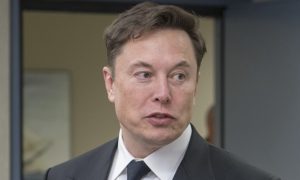
 Elon Musk2 weeks ago
Elon Musk2 weeks agoElon Musk commends Tesla team on successful Robotaxi launch
-

 Elon Musk2 weeks ago
Elon Musk2 weeks agoElon Musk confirms Tesla Optimus V3 already uses Grok voice AI



